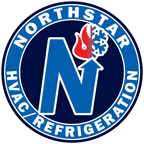Ammonia Refrigeration Systems: The Importance of Ventilation and Detection Systems
Written by Ed Rice
Ammonia refrigeration systems are highly efficient and widely used in industrial settings such as food processing, cold storage, and manufacturing. However, while ammonia offers many advantages as a refrigerant, including cost efficiency and environmental benefits, it also poses potential safety hazards due to its toxicity and flammability. Therefore, it is critical to have proper ventilation and detection systems in place to ensure safe operation and protect both employees and the surrounding community.
Why Ammonia is Used in Refrigeration
Ammonia (NH₃) is a popular refrigerant in industrial refrigeration systems because it has excellent thermodynamic properties, allowing for highly efficient cooling. Additionally, it has no global warming potential (GWP) or ozone depletion potential (ODP), making it an environmentally friendly option compared to many synthetic refrigerants. However, ammonia is toxic at high concentrations and can cause severe health effects if inhaled.
The Importance of Ventilation in Ammonia Refrigeration Systems
1. Safety in Case of Leaks Ventilation systems play a critical role in managing ammonia leaks. Proper ventilation helps to dilute ammonia concentrations in the air, reducing the risk of exposure to toxic levels. In areas where ammonia is used, particularly in enclosed spaces, adequate ventilation is necessary to ensure that if a leak occurs, the ammonia does not accumulate to dangerous levels.
2. Compliance with Regulations Many safety codes and regulations, including those from OSHA and the EPA, require ventilation systems in facilities that use ammonia refrigeration. These systems must be capable of venting ammonia to prevent buildup and ensure that indoor air quality remains safe for workers. Compliance with these regulations is essential to avoid fines and ensure the health and safety of employees.
3. Emergency Response In the event of an ammonia leak, ventilation systems play a crucial role in reducing the severity of the incident. Properly designed systems can quickly remove ammonia from the air, preventing the spread of the gas to other areas of the facility and allowing for safer evacuation and response by emergency personnel.
Detection Systems: An Early Warning for Ammonia Leaks
1. Continuous Monitoring Detection systems are essential for continuously monitoring ammonia concentrations in the air. These systems use sensors to detect even small amounts of ammonia, providing early warning of leaks before they reach dangerous levels. Early detection allows facility operators to respond quickly, isolating the leak and taking corrective action to prevent exposure.
2. Automated Alarms Modern ammonia detection systems are often integrated with automated alarms that trigger when ammonia concentrations exceed safe thresholds. These alarms can be set to different levels, with lower thresholds triggering alerts for routine maintenance and higher thresholds triggering emergency response protocols. Alarms ensure that personnel are aware of leaks and can take immediate action.
3. Remote Monitoring Many ammonia detection systems are equipped with remote monitoring capabilities, allowing facility managers to monitor ammonia levels in real-time, even from off-site locations. This ensures that any issues can be addressed promptly, reducing the risk of accidents and ensuring compliance with safety standards.
How Ventilation and Detection Systems Work Together
Both ventilation and detection systems are essential for maintaining a safe environment in facilities that use ammonia refrigeration. Detection systems provide early warning of leaks, allowing operators to respond quickly, while ventilation systems help to mitigate the effects of leaks by dispersing ammonia gas and preventing it from accumulating in dangerous concentrations.
The integration of both systems is crucial for protecting workers and preventing environmental harm. Together, these systems ensure that facilities can safely operate ammonia refrigeration systems while minimizing the risks associated with leaks or malfunctions.
How Northstar Refrigeration Can Help
At Northstar Refrigeration, we understand the critical importance of safety in ammonia refrigeration systems. We offer comprehensive services to design, install, and maintain ventilation and detection systems to ensure your facility operates safely and in compliance with industry regulations. Our expert technicians can assess your current systems and recommend upgrades or enhancements to improve safety and efficiency.
If you're looking to enhance the safety of your ammonia refrigeration system or need help implementing a comprehensive ventilation and detection strategy, contact Northstar Refrigeration at (508) 888-3692. We’re here to help you maintain a safe and efficient facility.
(508) 888-3692
www.northstarhvacr.com
Edward Rice
Director of Marketing,
Northstar Refrigeration, Inc.
95 Camelot Drive, Unit 1,
Plymouth, MA 02360
erice@northstarhvacr.com www.northstarhvacr.com
p: (508) 888-3692 x115
m: (508) 561-8638



